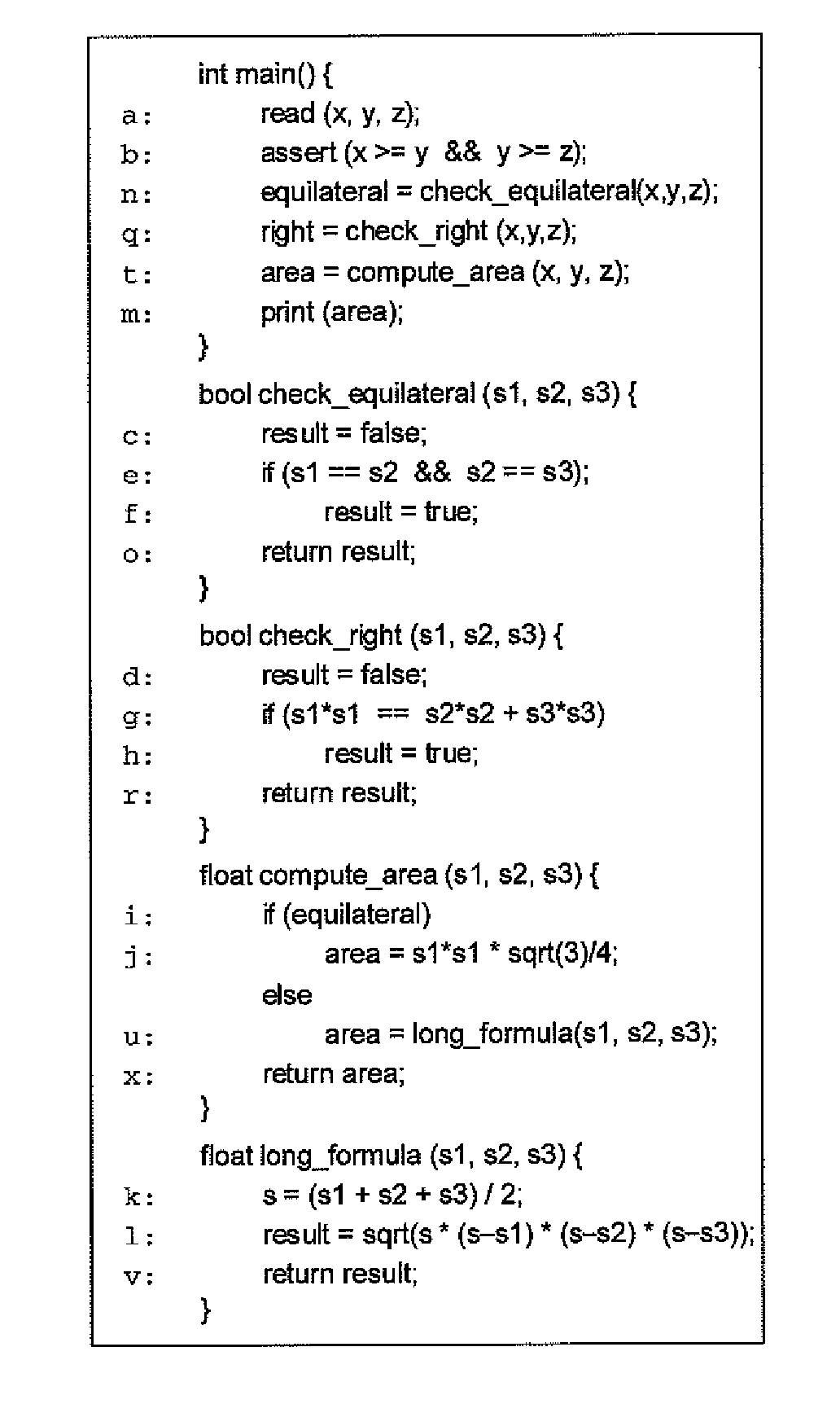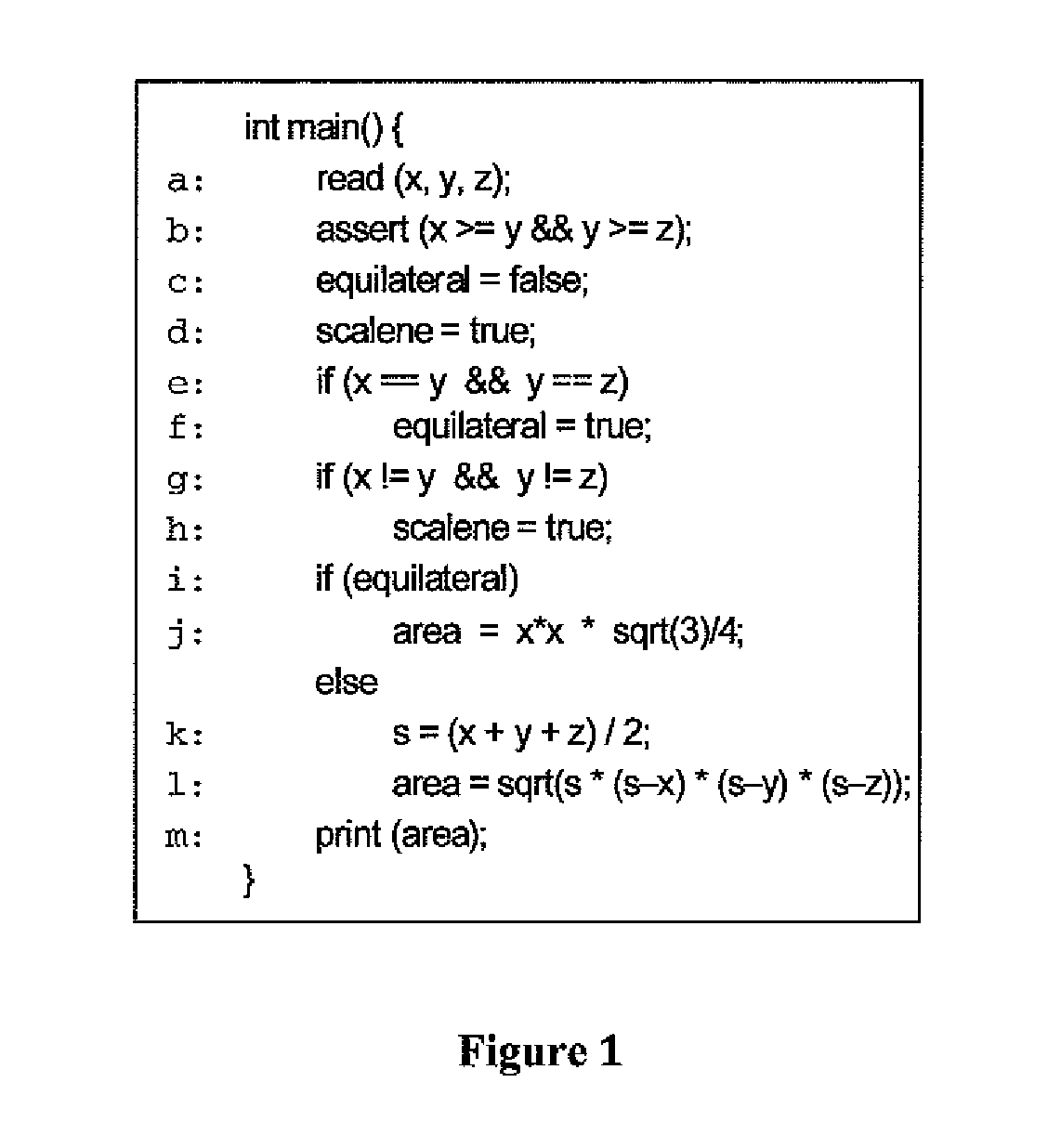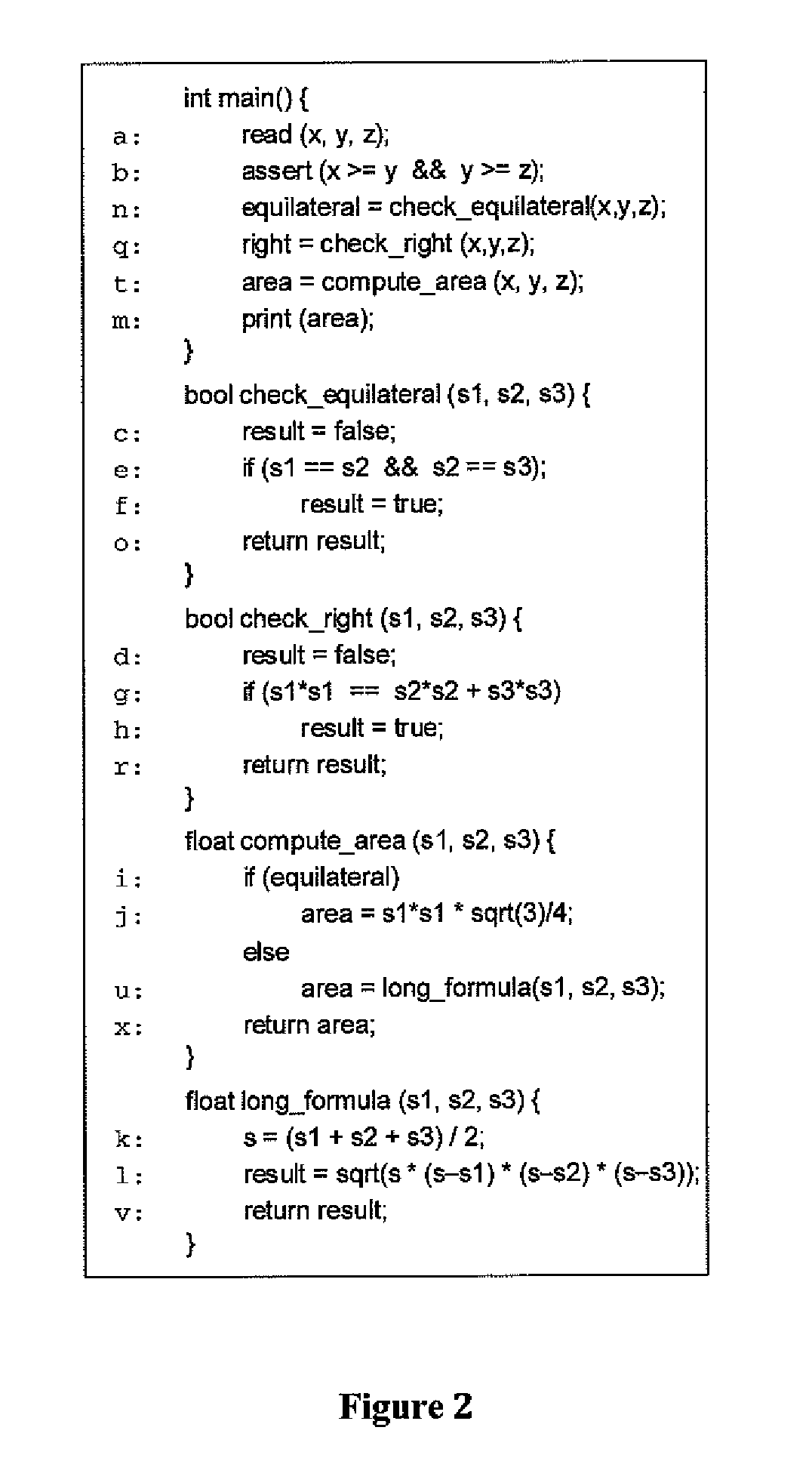Detection of global metamorphic malware variants using control and data flow analysis
a technology of data flow analysis and metamorphic malware, applied in the field of cyber security, can solve the problems of long detection time, easy defeat of signatures, and inability to manually generate signatures for each such variant, and achieve the effect of easy defea
- Summary
- Abstract
- Description
- Claims
- Application Information
AI Technical Summary
Benefits of technology
Problems solved by technology
Method used
Image
Examples
Embodiment Construction
[0021]Referring now to the figures and in particular refer to the simple example in FIG. 1. For brevity of presentation, the code is shown in C. The technique of the present invention applies equally well to malware code available as disassembled binary or that written using a scripting language.
[0022]The example code in FIG. 1 reads the lengths of the three sides of a triangle, determines what type of triangle it is, and uses that information to compute its area and prints the same. FIG. 2, shows a variant of this program where some of the code has been pushed into subroutines, and the code that determines if the given triangle is a scalene triangle has been replaced with a check for a right triangle. In general, the code in FIG. 2 is an example of global transformation where code fragments may be pushed into subroutines or pulled out of them. Such transformations may be carried out in an automated manner and may be applied recursively. FIGS. 3 and 4 depict both flow graphs (in the...
PUM
 Login to View More
Login to View More Abstract
Description
Claims
Application Information
 Login to View More
Login to View More - R&D
- Intellectual Property
- Life Sciences
- Materials
- Tech Scout
- Unparalleled Data Quality
- Higher Quality Content
- 60% Fewer Hallucinations
Browse by: Latest US Patents, China's latest patents, Technical Efficacy Thesaurus, Application Domain, Technology Topic, Popular Technical Reports.
© 2025 PatSnap. All rights reserved.Legal|Privacy policy|Modern Slavery Act Transparency Statement|Sitemap|About US| Contact US: help@patsnap.com



